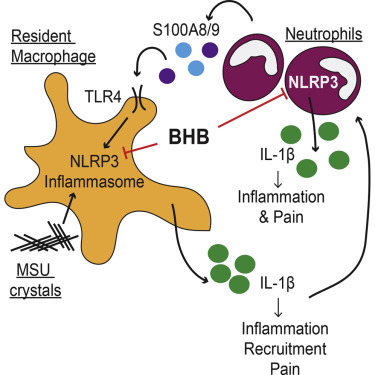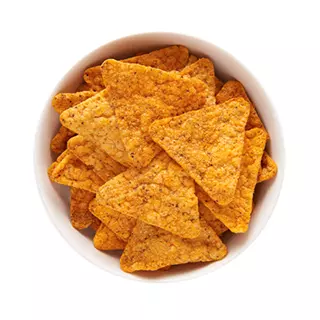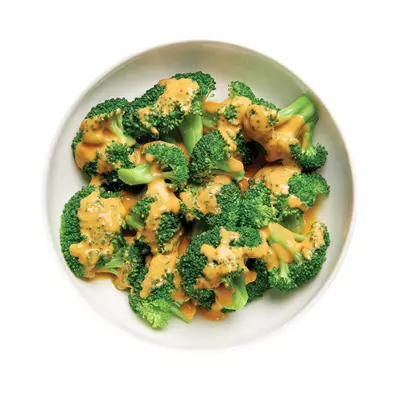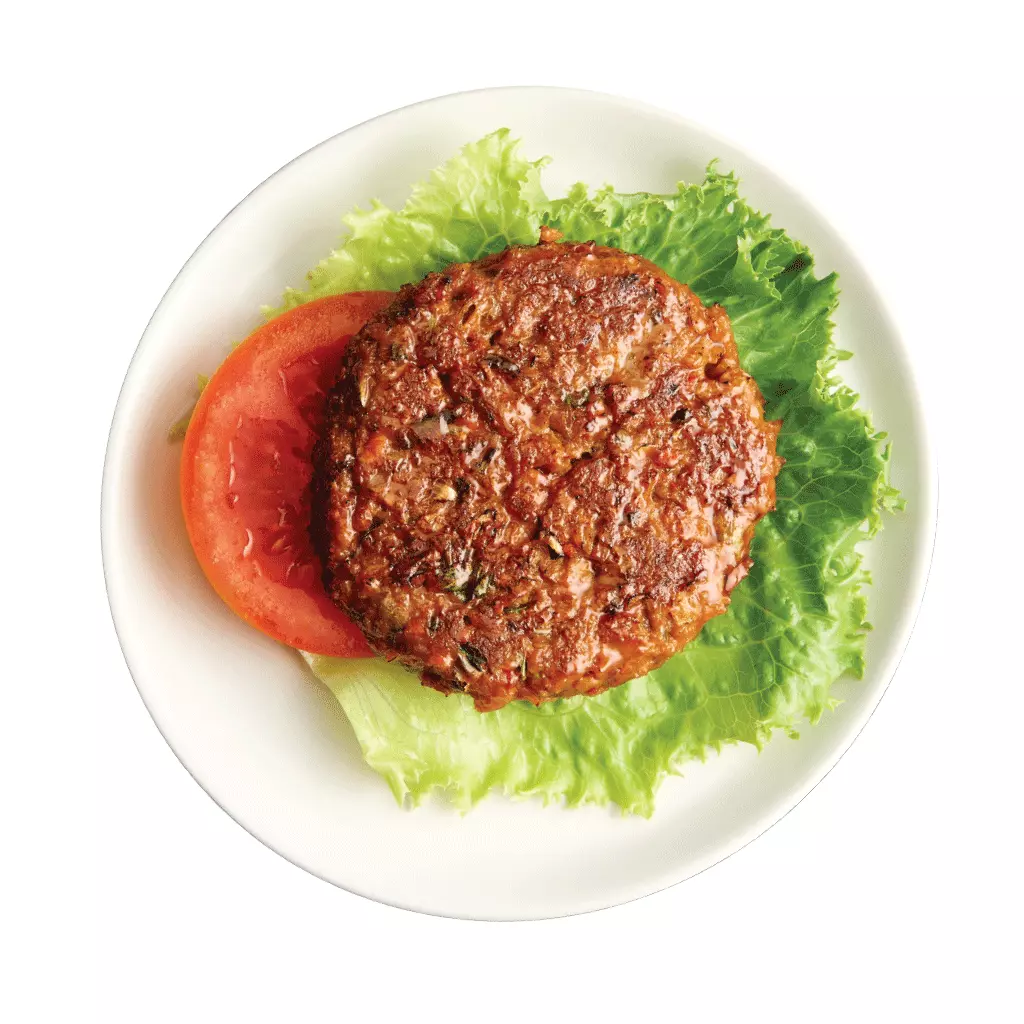One of the biggest concerns raised against Ideal Protein program is that such a protein-based ketogenic diet (known as the keto diet more popularly) may result in gouts and kidney stones due to the prolonged ketosis state of the body.
This belief about ketosis and its impact on gout or kidney stone is not only prevalent among many clients or patients, but also in many medical practitioners who participate in the same opinion.
But what do the studies say?
Case 1:
According to the Journal of Child Neurology, among the children who followed the keto diet as a treatment for epilepsy, 13 out of 195 subjects developed kidney stones. That’s about 25% of the total participants.
A worrying ration indeed!
However, children who took potassium citrate as supplements showed a decreased chance of developing kidney stones.
Case 2:
Just a few years back, a group of researchers at Yale studied the effects of ketogenic diets in rats and humans. The research showed that keto diet rather has a protective effect against joint damage caused by gout.
They’ve worked out the mechanism, and in the process demonstrated that BOHB – the primary ketone that works inside white blood cells to reduce inflammation – can reduce damaging inflammation without reducing the benefits of inflammation, such as healing and our defenses against infection.

It clearly indicates that a medically-tested ketogenic diet, such as Ideal Protein, may be beneficial in the management of gout.
Case 3:
However, another 2012 study found that people experience an increased risk of gout as they first enter into a ketogenic diet because of increased uric acid levels. Such concerns regarding gout and kidney stone are why many of our competitors use a ketogenic diet protocol only for the 2-week induction phase before including enough carbohydrates to take the client or patient out of the “ketosis state.”
What we can infer from these data
Taking all available research data into account, it’s clear that
-
The keto diet helps target the inflammation source to prevent acute gout symptoms.
-
We cannot conclude that the keto diet prevents the condition right away, as more studies are needed.
What makes Ideal Protein a better option over a traditional keto diet
Many weight-loss programs similar to the Ideal Protein diet try to completely prevent ketosis by providing a low-calorie diet with a moderate amount of protein. However, they include enough carbs in the diet to avoid ketosis in order to prevent kidney stones and gout.
This type of Ideal Protein alternative would be “okay” for the do-it-yourself diets or at-home patients requiring little monitoring to reach their desired weight.
Yes, the patients will drop weight on these programs. But, they will not get the full benefits they would have enjoyed on a pure ketogenic protocol.
First of all, it will take them longer to achieve their weight-loss goal – since an exact ketogenic diet is the best means to burn fat quickly.
Plus, by cutting down the amount of carbs in their diet, the patient has a slim chance of restoring the pancreas and giving the cells ample time to regain their insulin sensitivity.
Only a medical-grade weight loss protocol, like the Ideal Protein protocol, can provide all these health benefits. Also, patients dealing with signs of Metabolic Syndrome shouldn’t settle for less.
It is noteworthy that the Ideal Protein ketogenic protocol may be beneficial for gout patients as it greatly helps in weight loss.
In our experience, kidney stones occur rarely in a well-formulated keto diet.
Fact or Fiction?
Protein required for ketosis can increase uric acid leading to gout and kidney stone formation
This hype about protein diets is a common but false misconception.
While it’s true that a diet containing only whole foods and high fats, like the Atkins diet, might increase uric acid levels, all proteins are not equal.
Our body synthesizes uric acid through the action of the enzyme xanthine oxidase on purines, which are absent in pure proteins. Examples of pure proteins are albumin (egg white) and protein isolates.
Since the RNA and DNA structures of the cell are made up of purines, one can get a lot of these purine compounds if one takes a lot of cells (e.g., a diet rich in whole protein sources).
Other foods containing a very high level of purines include fermented foods (like beer, cheese, and wine), red meats, and organ meats (brains, tripe, liver, sweetbreads). In addition to that, caffeine’s structure is also similar to that of purine. Hence, uric acid levels can also raise when caffeine is acted upon by the enzyme xanthine oxidase.
On the other hand, an egg – being a single cell – has a meager amount of purines. As it is a single gamete cell, it only possesses 50% of the chromosomes, and therefore has 50% of the DNA, meaning it contains only 50% of the purines found in a somatic cell.
Note: Albumin, whey isolates, and soy isolates are the primary sources of protein in the Ideal Protein Foods. No purines!
But my friend followed an isolate diet with keto and had kidney stones…
An increased level of uric acid in the blood is one of the significant consequences of the Metabolic Syndrome. And, during the “ketosis” state, excessive ketones are excreted mainly via the urine. However, our body also removes them via feces and the breath (acetone breath).
With that said, it is possible for someone on a keto diet – despite containing low amounts of purines – to develop kidney stones.
Clearly, there must be another contributory factor other than a diet rich in purines.
Such a scenario is especially noticeable in the early weeks of a ketogenic diet protocol which may contribute to gout or kidney stone. At this stage, the body cells don’t have all the enzymes needed to use ketones as a source of energy altogether. As a result, some of the unutilized ketones are removed from the body.
Ketones are a little bit acidic and therefore tend to increase the acidity of urine. Leaving this condition unaddressed may lead to a gout attack at the early stage of ketosis, and uric acid stones may form in the kidney.
Now you know the reason why many people attribute a risk factor associated with the keto diet and kidney stones.
The chemistry behind gout and kidney stone formation
Acid Disassociation Constant (pKa) factor
Weak acids like uric acid can occur in two forms:
(i) the ionized or disassociated form (think of salt crystals dissolved in water), and
(ii) the unionized form (think of salts in a salt shaker).
The type of uric acid depends on the pH of its surroundings (in this case, we are referring to urine and blood).
The pH at which an acid occurs as half ionized and half unionized is known as pKa. The pKa for uric acid is normally 5.5. It means that at this pH, 50% of it is like crystal salt, and the other 50% is like dissolved salt.
Here is the chemical reaction that shows how urine gets the acid and salt contents:
KHCO3 + R-COOH → R-COOK + H2CO3
In simple words,
Potassium bicarbonate + uric acid → Mono-potassium urate + Carbonic acid
The bicarbonate buffer (potassium or sodium bicarbonate) reacts with uric acid in the blood to produce mono-potassium and mono-sodium urate (respectively).
When potassium bicarbonate reacts with uric acid, it produces mono-potassium urate and carbonic acid (H2CO3), which then undergoes a zinc-catalyzed reaction with the enzyme alpha-carbonic anhydrase to form water.
H2O (water) is removed as urine, while CO2 is exhaled.
The same reaction will take place if the buffer is sodium bicarbonate (NaHCO3), and of course, the product would be mono-sodium urate.
Increasing pH will result in a rise of ionized uric acid
Don’t forget that the body controls the blood pH and keeps it between 7.3-7.4.
This implies that since pH numbers are in powers of ten (in logarithms), uric acid in the bloodstream occurs over a 100-fold in the dissociated form than in the unionized form. They occur in equal parts at a pH of 5.5, so if we increase the pH to, let’s say, 7.4 (a 100-fold increase), the ionized (dissolved) form will become the dominant species.
As the environment’s alkalinity increases, the more ionized the acid to base ratio becomes, and no crystals will form.
A concentration of acid/salt on a ketogenic diet can impact gout
The concentration of the acid/salt is another contributory factor to gout and kidney stone formation during ketosis.
Think of soluble salt in water. As you add the salt to the water, it dissolves. But as you add more salt, a point will come when the salt no longer dissolves. It’s at this point that we say the solution is fully saturated. If you continue to add more salt inside, the crystals will go to the bottom of the solution and precipitate.
Now imagine this occurring in your bloodstream. The undissolved uric acid crystals can accumulate over time and cause an inflammatory response. This mechanism is how gout takes place.
Into the kidneys
Urine is produced as the kidneys filter the blood in the glomeruli, and uric acid is secreted at the distal convoluted tubule.
As said earlier, uric acid can occur in two different forms (as the insoluble unionized form or as the crystalline urate salt, which is roughly 20X more soluble than the unionized form). If the pH of urine is 5, precipitation takes place when the uric acid concentration is just 60mg per one liter of urine.
An average person excretes around 400mg of uric acid every day. Hence, a person with a urinary pH of 5 will need to expel more than 6 liters of urine daily to prevent crystallization. At a urinary pH of 6, crystallization does not take place until one liter of the urine contains about 220 mg of uric acid.
A low urinary pH leads to the formation of poorly soluble uric acid as opposed to the more soluble urate anion. Thus it predisposes to uric acid lithiasis, even when the total amount of uric acid being excreted is not above normal.
Hence, a low urinary pH leads to the formation of poorly soluble uric acid. Stone formation (urolithiasis) results from uric acid precipitation in the kidney tubules.
Recommended foods to reduce chances of gout and kidney stones while in ketosis
The Ideal Protein weight loss protocol requires that a client or patient following a keto diet take at least, two liters of water every day to mitigate the chances of kidney stone formation.
They should also take alkaline mineral supplements, such as
- Magnesium
- Potassium
- Calcium
- Omega-3 acid
- 4 cups of green veggies
- Two salads.
Additionally, a client or patient will take one cup of water for every cup of caffeinated beverage consumed.
For most clients or patients following the ketogenic diet, the above-mentioned protocol is enough to maintain the urinary pH in the range of 6, so kidney stone formation is never going to be a problem as well as reducing the chances of gout.
Also, one should remember that the ketogenic diet may lead to gout symptoms if they are not careful enough while choosing their meat and seafood consumption.
Special patient populations with a high probability of gout and kidney stones
People who have the tendency to develop uric acid stones can be classified into four groups:
- Patients with diseases linked to increased levels of uric acid in the serum (e.g., gout): Approximately 25% of patients who have gout develop uric acid stones, and approximately 25% of patients with stones have once had gout.
- Patients who are likely to be dehydrated: These may include people with ulcerative colitis, chronic diarrhea, and those who have ileostomies.
- The patients who have hyperuricosuria but don’t have increased levels of uric acid in the serum: In males, hyperuricosuria is defined as excreting more than 800 mg of uric acid every day or 750 mg of uric acid in females. Some medications like thiazide-type diuretics can raise the rate at which uric acid is excreted, causing stone formation.
- Patients who have kidney stones (despite having normal levels of uric acid in the serum) and don’t show oversecretion of uric acid in the urine: Such patients often have acidic urine, a condition known as idiopathic uric acid lithiasis.
Recommended management of special patients
Before starting a ketogenic diet, the coach or clinician will carefully go through the patient’s Health Profile. They should check for a history of kidney stones/gout or conditions that can cause dehydration (such as colitis, chronic diarrhea, or ileostomies).
- This group of patients should be given enough hydration. Raising their daily water requirement to at least 3 liters a day wouldn’t be a bad idea.
- Every clinic or center should have, at least, a roll of phenaphthazine paper that is available to purchase online or at a local pharmacy. Unlike litmus paper that only shows whether a solution is acidic or basic, pH paper determines the urine pH. Putting a strip of this paper mid-solution will provide a precise reading of the urinary pH.
- Although most clients or patients would be “okay” with a pH of 6, the coach/ clinician will ensure that they maintain a minimal urinary pH of 6.5.
- The client or patient must be checked during the follow-up visitations and utilize a pH paper strip to monitor their urine pH at home every day. Both the coach and the PCP should review the results every week.
We advise that the client or patient does a pH test thrice in a day.
One in the morning, one in the afternoon, and the final one before going to bed.
He/she will continue this procedure until the clinician achieves an average urinary pH. Only weekly tests will be required going forward.
Adjusting the pH of urine
PRESCRIBERS: Medical Doctors, Nurses, Physician Assistants, and Doctor of Osteopathic Medicine
The protocol below is recommended to reduce the chances of kidney stone formation and gout for the group of patients mentioned earlier (as they follow ketosis):
- Check urine pH during the initial consultation (with pH paper)
- Recheck pH on the fourth day of the weight loss protocol
- If urine pH is below 6.5, begin treatment with potassium citrate.
- Start dosage at around 60 mEqs (milliequivalents) of potassium citrate per day. Urocit-K 10 is easy to use. 2 tablets at breakfast, one tablet at lunch, two tablets at supper, and one pill with snacks at bedtime would be an ideal starting regimen. There are packets of crystals or liquid forms of the medication for people who have difficulties swallowing pills. These are readily available and are not too expensive to afford.
- The highest levels are reached by the third day of the protocol; recheck urine pH at the first follow-up. Adjust the medication dosage as necessary to make sure the urinary PH is up to 6.5.
- About 60mEqs of potassium citrate will increase the urinary pH by 0.7 units.
- Let the patients know the importance of staying hydrated! (at least, 3 liters of water every day).
- If applicable, draw a starting potassium level and repeat the same in the third week.
- Stop weak diuretics (potassium-sparing diuretics) and replace them with loop diuretics if need be. Follow other safety precautions in order not to develop hyperkalemia. Reduce or Stop the Rx potassium supplements, ACE inhibitors, and so on while on this therapy.
- Tell the patient or client to take the dose within 30 minutes of eating.
- Since the potassium citrate capsules are big, tell patients/clients to take a lot of water and not lie down for 30 minutes after taking the medication.
NON-PRESCRIBERS: Doctors of Chiropractic, and so on
Non-RX alternatives:
- Check urine pH during the initial consultation (with pH paper), and check again on the fourth day of the protocol.
- If the urinary pH is not up to 6.5, begin treatment with baking soda (sodium bicarbonate).
- Start dosage at half teaspoon added into 4-5 ounces of water three times per day. This is going to provide roughly 75 mEqs of bicarbonate.
- Retest the urine PH at the first weekly follow-up. Add 1 or 2 more half-teaspoon doses if the urinary pH stays below 6.5.
Since this regime offers a lot of sodium, the patient needs to stay away from sea salt and take sodium-rich foods in small quantities! Look out for symptoms of fluid retention, such as swollen ankles, rings fitting snugly, slow weight loss, and so on.
A possible alternative to the regimen above
Tell the patient to take one calcium and potassium capsule after meals and add half a teaspoon of sodium bicarbonate between breakfast and lunch and one more dose of the same between lunch and supper.
While this won’t give the body a lot of sodium (which may be needed in some instances), it will produce more mono-potassium urate (MPU), which is even more soluble in water than the sodium salt!
Lastly, don’t forget that you can place these clients/patients on the Alternative Protocol if they cannot follow all these steps or complex drug interaction with potassium supplementation or other comorbidities could make these measures dangerous.
As the patient gets better and the medications stop, you can also place the client or patient on the regular weight loss protocol, following the guidelines listed above.
Getting pH Test Paper
You can order PH paper online. Amazon has plenty of options, and it’s very inexpensive. We recommend that every clinic and relevant dieter has at least one roll of pH test paper.
Conclusion
Do you want to learn more about how you can properly follow a ketogenic diet for weight loss while keeping gout in check? How would you reduce the chances of kidney stone formation while following a keto diet?
Contact BioIntelligent Wellness at 760 994 1248 to schedule a 15-minute complimentary consultation and get the answers from the experts.






